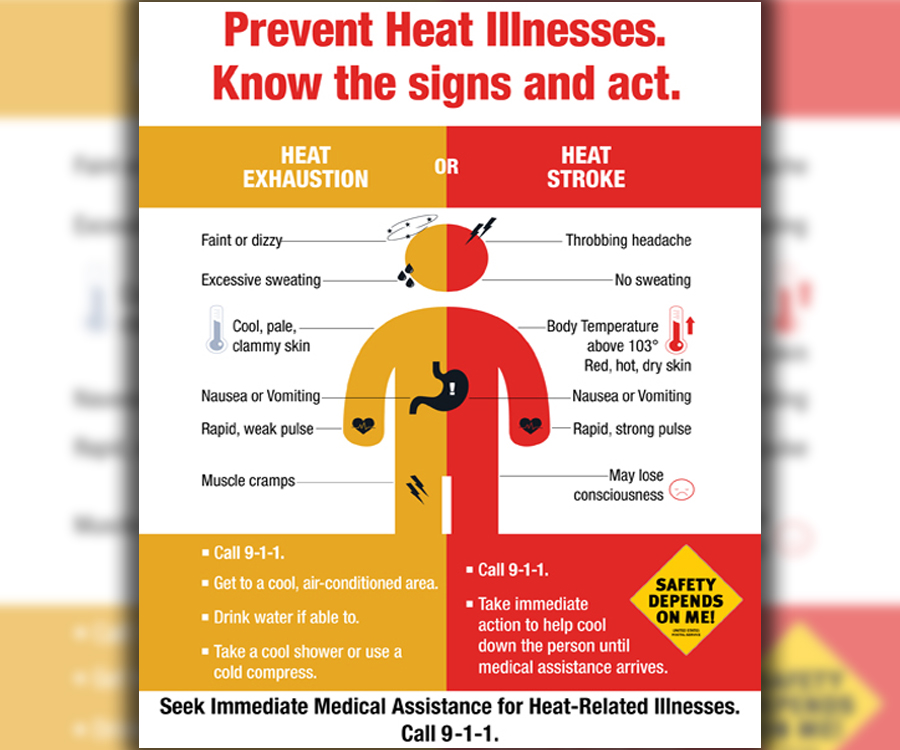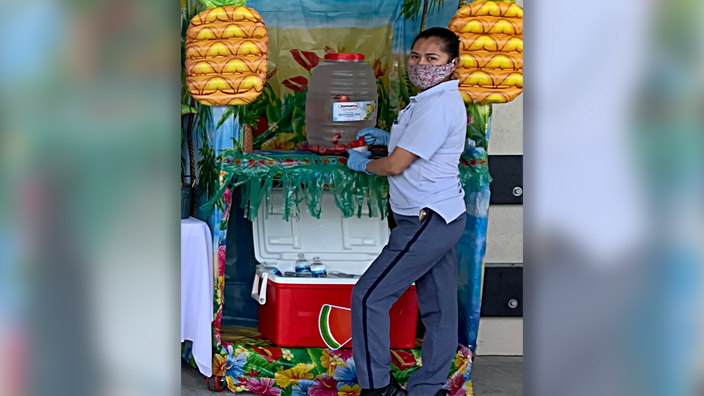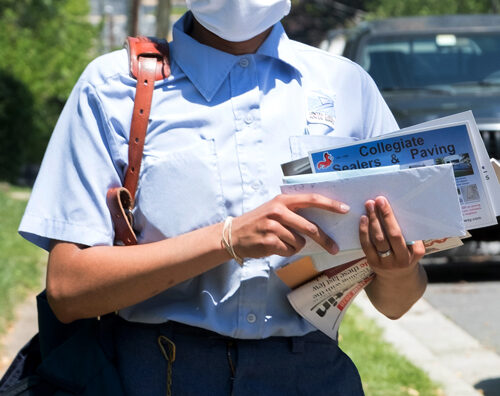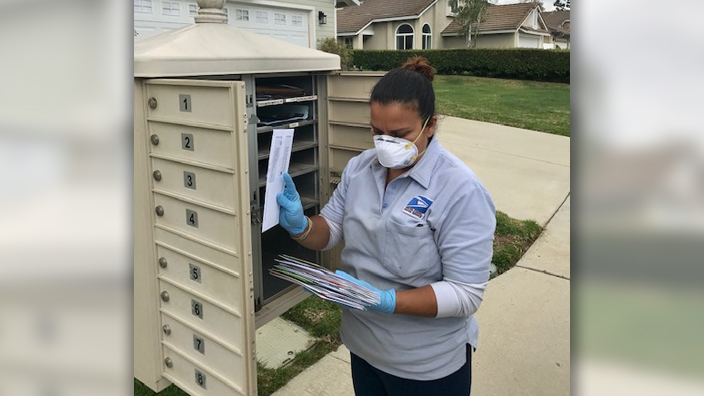If you or a co-worker were experiencing a heat-related illness, would you recognize the symptoms?
The Postal Service is reminding employees that two of the most common illnesses are heat exhaustion and heat stroke.
Heat exhaustion symptoms include cool, moist skin; heavy sweating; headache; nausea or vomiting; dizziness; light headedness; weakness; thirst; irritability; and a fast heartbeat.
Here are first-aid guidelines for people who experience heat exhaustion: Call 911; sit or lie down in a cool, shaded area; drink plenty of water or other cool beverages; use cool compresses or ice packs if available; and do not return to work that day.
Heat stroke symptoms include confusion; fainting; seizures; excessive sweating or red, hot, dry skin; and a very high body temperature.
Here are first-aid guidelines for people who experience heat stroke: Call 911; rest in a shaded, cool area; loosen clothes; remove outer clothing; use a fan and place cold packs under armpits if available; wet clothing with cool water; apply ice packs, cool compresses or ice if available; drink water or other fluids as soon as possible; and stay with the victim until help arrives.
The Postal Service also wants employees to take proactive steps to avoid heat-related illnesses, including:
• Hydrate before, during and after work. Drink at least 8 ounces of water every 20 minutes.
• Dress appropriately for the weather. On warm days, wear light-colored, loose-fitting and breathable clothing to keep your body temperature down.
• If you experience discomfort while wearing a face covering, remove it until the discomfort ceases. However, you should continue to practice social distancing when you come into contact with others.
• Use the shade to stay cool. When possible, use shaded areas to stay out of direct sunlight.
The Safety Blue page has more information.
Share your feedback at uspslink@usps.gov. Your comments could be included in the “Mailbag” column.



